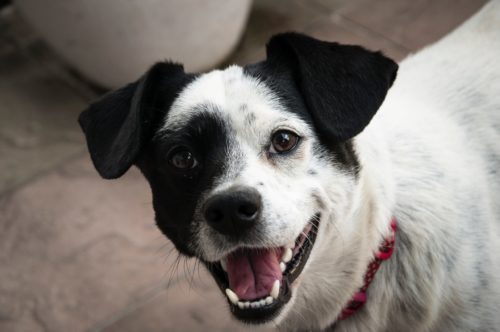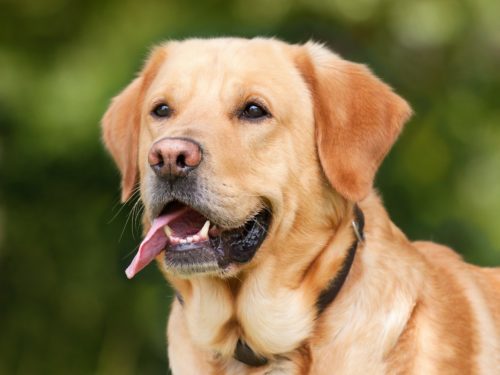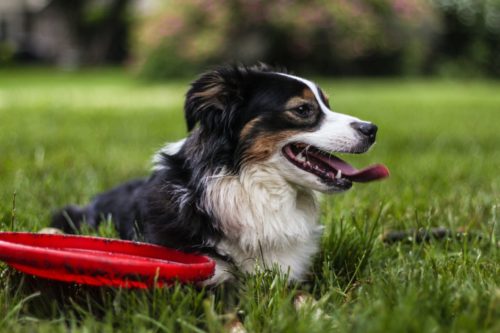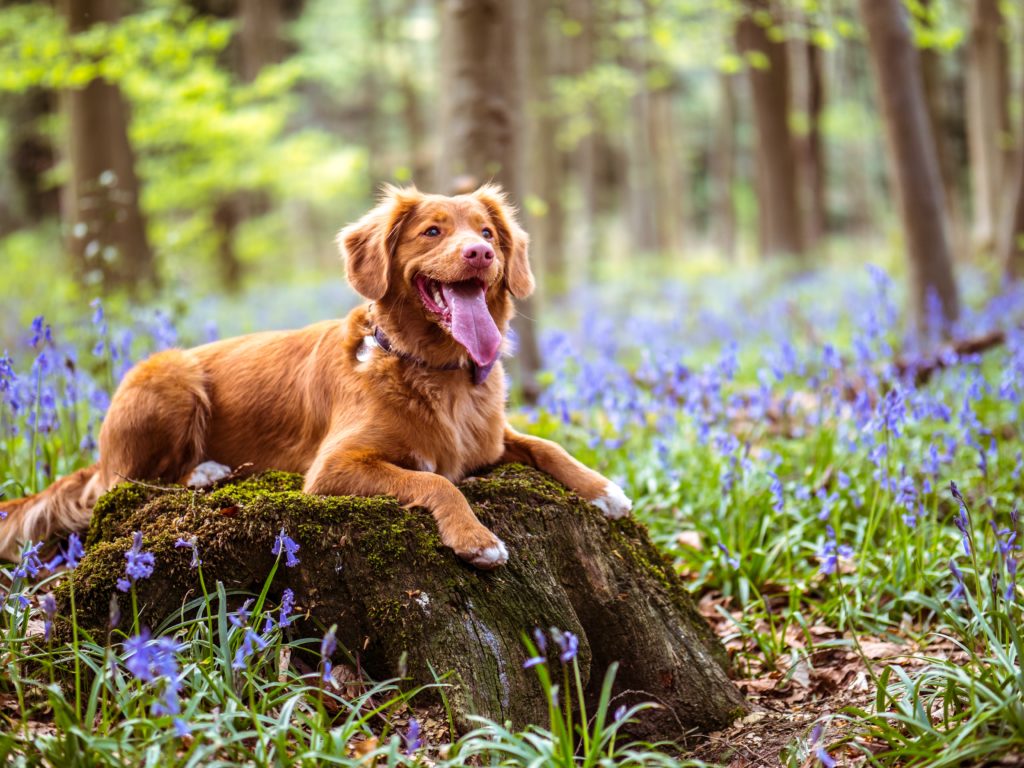In comparison to their domesticated ancestors (or even dogs from a few decades ago), man’s best friend is enjoying the good life – from plush doggie beds and organic shampoos to CBD-infused dog biscuits, some people’s pooches are living in the lap of luxury! On the other hand, even less-extravagant pet parents want what’s best for their dog, including a balanced diet, safe chew toys, adequate exercise, and of course, lots of affection. But these aren’t the only things to keep in mind when it comes to a dog’s health: his teeth also play a very important role in his overall well-being. In fact, many pet owners overlook dental hygiene in dogs. However, disregarding oral care for dogs isn’t only putting a pup’s health at risk, but could potentially cause him dental pain or discomfort. From commonly-asked questions such as “how to clean your dog’s teeth” to “what to look for in a healthy dog’s mouth”, this article will address everything pet owners need to know about canine dental hygiene.
Proper Oral Care For Dogs: Recognizing A Healthy Mouth
When it comes to effective canine hygiene, knowing the basics of a healthy dog mouth is first and foremost to providing him with proper care. Below is an overview of what to look for when examining dogs.
Signs of a healthy dog mouth include:
- Canine teeth appear clean and free of tartar/plaque
- Teeth are intact (i.e., not loose, broken or jagged)
- Tongue should appear moist; no cuts or lumps
- Gums should appear pink (depending on breed)
Signs of oral problems in dogs include:
- Chronic bad breath (halitosis)
- Cysts under the tongue
- Discoloration of teeth or gums
- Excessive drooling
- Gingivitis (inflamed gums)
- Proliferating gum disease
- Signs of periodontal disease (including swelling, pain, loose teeth, difficulty eating, and nasal discharge)

- Tumors in the gums
Knowing a dog’s body from head to tail is important, since it provides a point of reference as he ages – including health problems and other physical details that need to be brought up during routine veterinarian examinations, such as signs of tooth and gum disease. Owners should become familiar with their dog’s teeth, mouth and gums at a young age in order to know what ‘healthy’ looks like; it might even be advantageous to keep a journal with notes for vet check-ups.
Although most dogs’ gums are a salmon-pink color when healthy, some dog breeds may naturally have all-black or black and pink gums. While self-diagnosing gum discoloration may be trickier in some breeds than others, owners usually know what their pooch’s gums look like when healthy. In the instance that raised spots, lumps, bright red gum/mouth tissue, pale gums, bleeding from the mouth, broken/chipped teeth or any other dental issues are observed, a trusted vet should be contacted right away to determine the next course of action.
How To Brush Your Dog’s Teeth: Creating A Clean Routine
While most dog lovers will delightfully reminisce the “puppy breath” from a pooch’s younger years, his dental needs will naturally increase as he gets older. It’s actually normal for dogs to have less-than-perfect breath after the first few years, but it’s up to dedicated pet parents to practice regular brushing – realistically, a few times per week, if possible – to maintain optimal oral hygiene. Much like their human counterparts, adult dogs require regular dental maintenance to keep bacteria (and related oral health problems) at bay. That’s why it is crucial to start when dogs are young: besides brushing, there are a number of doggie treats and toys that are designed to help reduce bacteria, plaque and tartar build-up. However, it takes time to create a lasting (and effective) dental routine with dogs. For inexperienced pet parents, it’s best to speak with a vet regarding specific dental health questions, including the best type of dog-friendly toothbrush and toothpaste brands for pups. Below are a few tips to get started:
- Slow & Steady: Before attempting to brush his teeth, the dog must first allow the owner to touch his muzzle, including his mouth and teeth. According to the American Kennel Club, by acclimating him to different elements of the routine (e.g., getting him familiar with the sight of the toothbrush; touching his mouth, etc.), it will be easier to introduce the toothbrush. As long as the dog is calm and appears relaxed, the owner may then let him smell the toothbrush, and if he is receptive, rub it on his teeth. Experts advise that it may take a few days to get to this last step, so patience is key – pet parents should speak softly and reassure the dog throughout the process. It’s important to avoid negative behavior or induce anxiety, since it can quickly cause the dog to fear the routine. The AKC also recommends choosing a specific place in the house and designating that area for his oral hygiene routine. Other experts suggest finding a doggie-safe toothpaste that tastes good to your pooch. Essentially, the more positive-reinforcement rituals an owner can create, the better success they will have when it comes to their dog’s dental care.
- Toothbrush Technique: Once it seems like he’s ready to allow actual toothbrush-to-teeth contact, owners will want to work on the appropriate technique to formulate a regular oral dog-care routine:
1) First, lift dog’s lips and gently brush his front teeth
2) Next, slowly work the toothbrush to the back of dog’s mouth (if dog allows)
3) Finally, be sure to pay attention to both the inside/outside of dog’s teeth
 Pet parents should take note: since this is a hygiene routine that the dog will have to get used to over time, owners may only be able to brush a couple of teeth during the first few attempts. Depending on the age of the dog, his breed, personality, and of course the relationship between the pet and his owner, the actual time it takes for this routine to become ‘normal’ for the dog may vary – some dogs become acclimated very quickly, while others may initially be resistant or wary.
Pet parents should take note: since this is a hygiene routine that the dog will have to get used to over time, owners may only be able to brush a couple of teeth during the first few attempts. Depending on the age of the dog, his breed, personality, and of course the relationship between the pet and his owner, the actual time it takes for this routine to become ‘normal’ for the dog may vary – some dogs become acclimated very quickly, while others may initially be resistant or wary.
In addition, for owners who aren’t sure about the appropriate doggie dentifrices, not to worry: a vet can recommend the best type of toothbrush based on the pooch’s size and breed, as well as toothpaste brands specifically formulated for dogs. Furthermore, pet owners should never use human toothpaste, as the ingredients can be dangerous for dogs.
- Professional Cleanings: Just as humans require an annual cleaning at the dentist’s office, dogs do, too – in fact, part of a healthy oral routine for pups includes a yearly trip to the vet. Every one to three years, dogs should receive a professional cleaning at the veterinarian’s office, where it will be administered under anesthesia to ensure his safety and comfort. By thoroughly cleaning his teeth and gums, the vet’s efforts help to protect the dog against oral and other systemic diseases. Additionally, the vet may wish to take X-rays of the pup’s teeth in order to check for any underlying health problems. Experts encourage owners to speak with the vet during visits regarding canine oral care, including nutritional suggestions to support tooth & gum health, as well as dental-friendly dog chew recommendations that are safe for his breed, size and weight.
Pet Dental Cleaning: The Importance Of Oral Hygiene In Dogs
Whether or not a pet parent spoils their canine companion, one thing’s for certain: when it comes to his health and longevity, dental hygiene in dogs is just as important as feeding him premium dog food or seeing the vet for his annual check-up. Therefore, creating a routine early on with a beloved pooch is essential in protecting his oral health.
dogs is just as important as feeding him premium dog food or seeing the vet for his annual check-up. Therefore, creating a routine early on with a beloved pooch is essential in protecting his oral health.
For pet parents who don’t know how to clean their dog’s teeth (or have never even considered doing so), the first step is education. The more owners know about their dog’s overall dental health – including what a ‘healthy’ dog mouth should (or shouldn’t) look like – the better they can provide sufficient oral hygiene practices.
Remaining proactive as a pet parent is vital when it comes to providing appropriate dental care, as regular at-home mouth examinations allow owners to check for any signs of tooth decay, infection, or any other abnormalities. Once a dental hygiene routine has been effectively established, going to the vet for annual cleanings is crucial to a dog’s overall well-being: it not only ensures his dental health, but can protect him from secondary illnesses that may stem from periodontal-related diseases. Finally, proper nutrition – including supplements for dogs and dental-friendly doggie treats – can help to support good oral hygiene throughout a pup’s lifespan.
Sources Cited:
1) Ollila, Erin. Hill’s (hillspet.com), December 19, 2019, https://www.hillspet.com/dog-care/healthcare/dog-oral-care-and-brushing-teeth. Accessed February 1, 2020.
2) Tuttle, Brad. “7 Crazy New Products You Can Buy to Spoil Your Pet.” Money.com, August 26, 2014, https://money.com/pets-dogs-cats-spending/. Accessed February 1, 2020.
3) “10 Tips for Better Dental Health in Dogs.” FETCH by WebMD (pets.webmd.com), (no publish date), https://pets.webmd.com/dogs/guide/tips-better-dental-health-dogs#1. Accessed February 1, 2020.
4) deBara, Deanna. “How Often Should I Brush My Dog’s Teeth, Really?” Rover.com, (no publish date), https://www.rover.com/blog/how-often-should-i-brush-my-dogs-teeth/. Accessed February 1, 2020.




